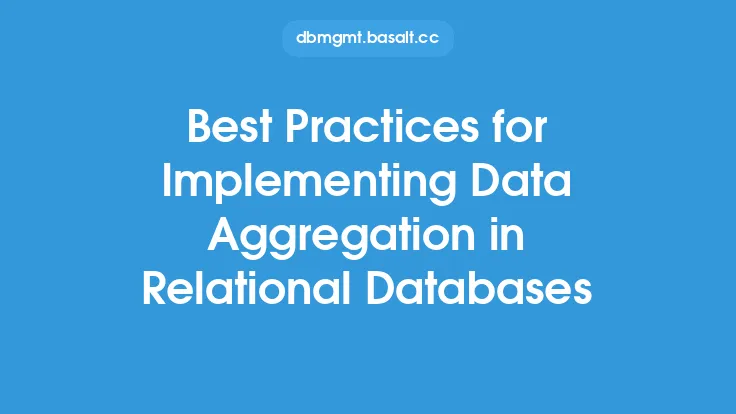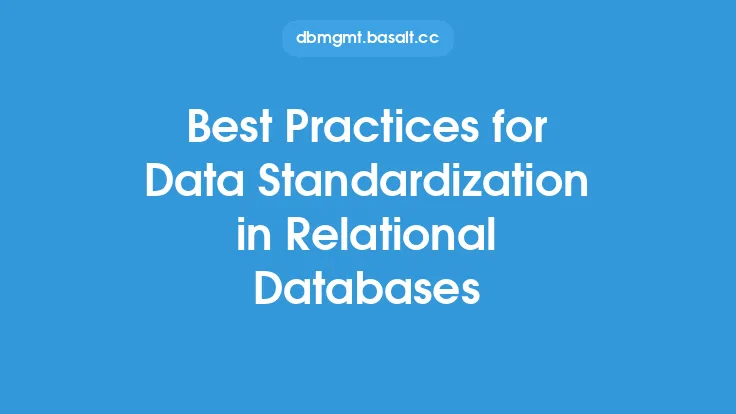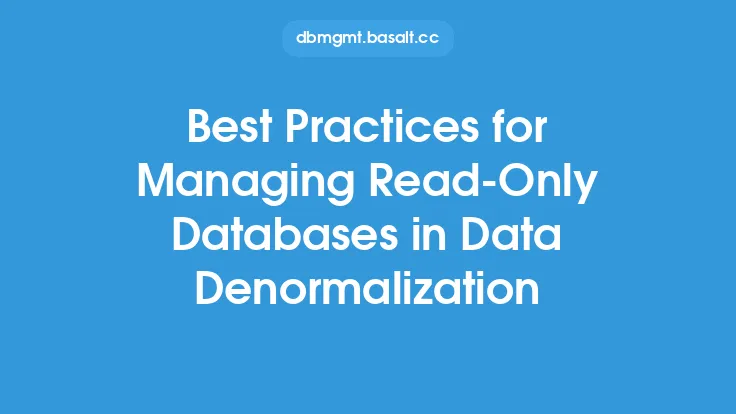When it comes to optimizing the performance of relational databases, indexing is a crucial aspect that can significantly impact query execution times, data retrieval efficiency, and overall system scalability. Indexing, in essence, is a data structure technique used to improve the speed of data retrieval operations by providing a quick way to locate and access specific data. In this article, we will delve into the best practices for indexing relational databases, exploring the key considerations, techniques, and strategies for creating effective indexes that enhance database performance.
Understanding Index Types
Relational databases support various types of indexes, each designed to serve specific purposes and optimize different query patterns. The most common index types include:
- B-Tree Indexes: These are the most widely used index type, suitable for range queries, equality searches, and sorting. B-Tree indexes are self-balancing, ensuring that the height of the tree remains relatively constant even after insertions and deletions, thus maintaining query performance.
- Hash Indexes: Optimized for equality searches, hash indexes are particularly useful when the query filter specifies an exact match. However, they are less effective for range queries or when the query requires scanning a sequence of values.
- Full-Text Indexes: Designed to support full-text search queries, these indexes enable efficient searching for words or phrases within text columns, making them indispensable for applications that require complex text searching capabilities.
- Composite Indexes: Also known as multi-column indexes, these indexes are created on more than one column of a table. They are beneficial for queries that filter on multiple columns, as they can reduce the number of rows that need to be scanned.
Index Creation Best Practices
Creating effective indexes requires a deep understanding of the database schema, query patterns, and data distribution. Here are some best practices to consider:
- Analyze Query Patterns: Before creating an index, analyze the types of queries that are executed most frequently. This helps in identifying the columns that are used in the WHERE, JOIN, and ORDER BY clauses, which are prime candidates for indexing.
- Choose the Right Index Type: Select an index type that aligns with the query patterns. For instance, if queries often filter on a range of values, a B-Tree index might be more appropriate than a hash index.
- Consider Data Distribution: The effectiveness of an index also depends on the data distribution in the indexed columns. Indexes on columns with low cardinality (i.e., few unique values) may not be as effective as indexes on columns with high cardinality.
- Avoid Over-Indexing: While indexes can speed up query execution, they can also slow down insert, update, and delete operations, as the database needs to maintain the index data structure. Therefore, it's crucial to strike a balance and avoid over-indexing, which can lead to performance degradation.
Maintaining Indexes
Indexes, like any other database object, require maintenance to ensure they continue to perform optimally. Here are some strategies for maintaining indexes:
- Monitor Index Usage: Regularly monitor which indexes are being used by queries and which are not. Unused indexes can be dropped to reduce maintenance overhead.
- Rebuild and Reorganize Indexes: Over time, indexes can become fragmented, leading to decreased performance. Rebuilding or reorganizing indexes can help maintain their efficiency.
- Update Statistics: Ensure that table and index statistics are up to date. Outdated statistics can lead to suboptimal query plans, reducing the effectiveness of indexes.
- Consider Partitioning: For very large tables, consider using partitioning. This can improve the manageability and performance of indexes by dividing the data into more manageable chunks.
Advanced Indexing Techniques
Several advanced indexing techniques can further enhance database performance:
- Covering Indexes: A covering index includes all the columns needed to answer a query. By including all necessary columns in the index, the database can satisfy the query entirely from the index, without needing to access the underlying table.
- Function-Based Indexes: These indexes are created on the result of a function or expression. They are useful for queries that filter on the result of a function, allowing the database to use the index for such queries.
- Index Compression: Compressing indexes can reduce storage requirements and improve query performance by reducing the amount of data that needs to be read from disk.
Conclusion
Indexing is a powerful tool for optimizing the performance of relational databases. By understanding the different types of indexes, following best practices for index creation, maintaining indexes regularly, and leveraging advanced indexing techniques, database administrators can significantly improve query execution times, enhance data retrieval efficiency, and contribute to better overall system scalability. As database systems continue to evolve, the importance of indexing best practices will only continue to grow, making it an evergreen aspect of database performance optimization.





